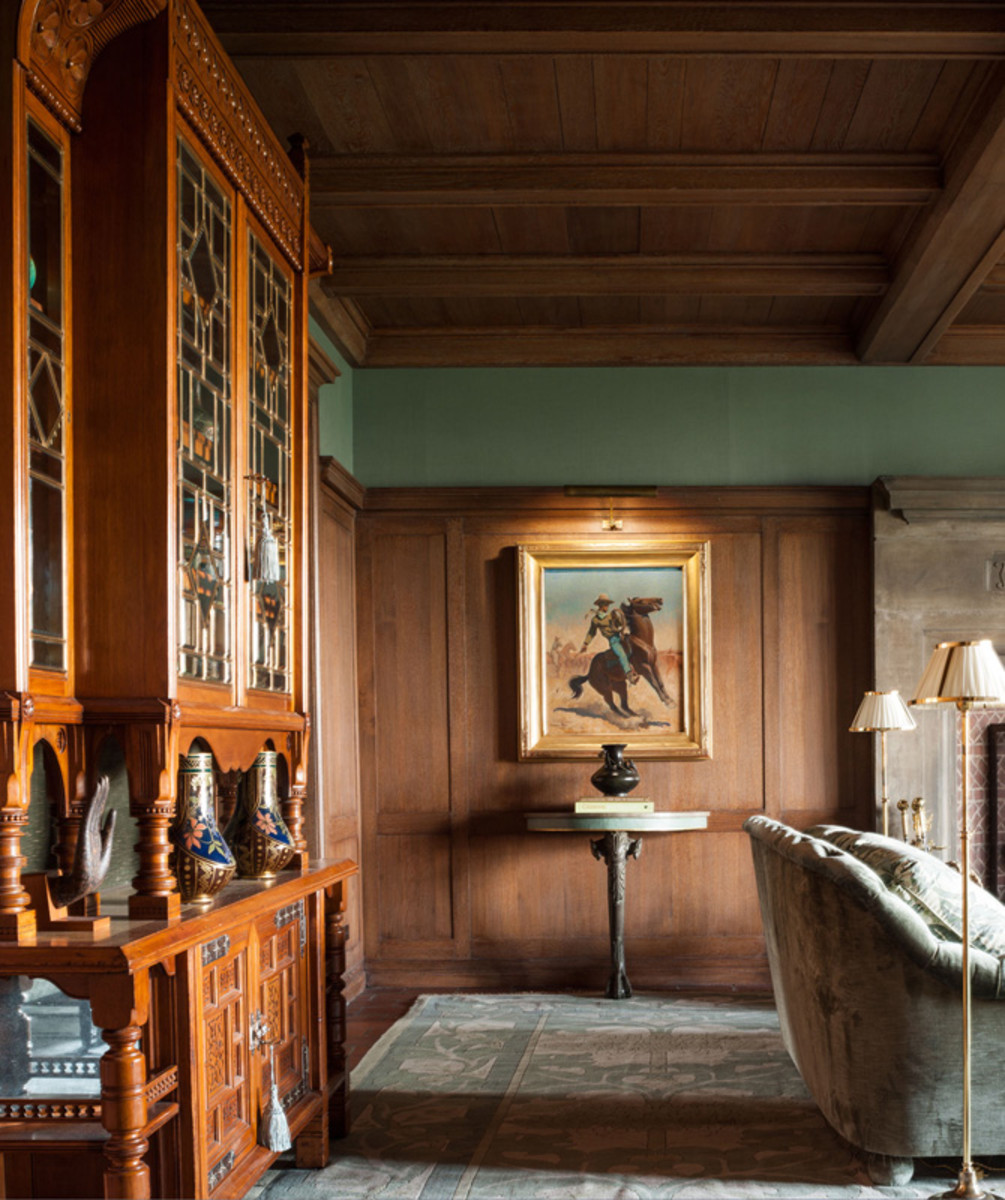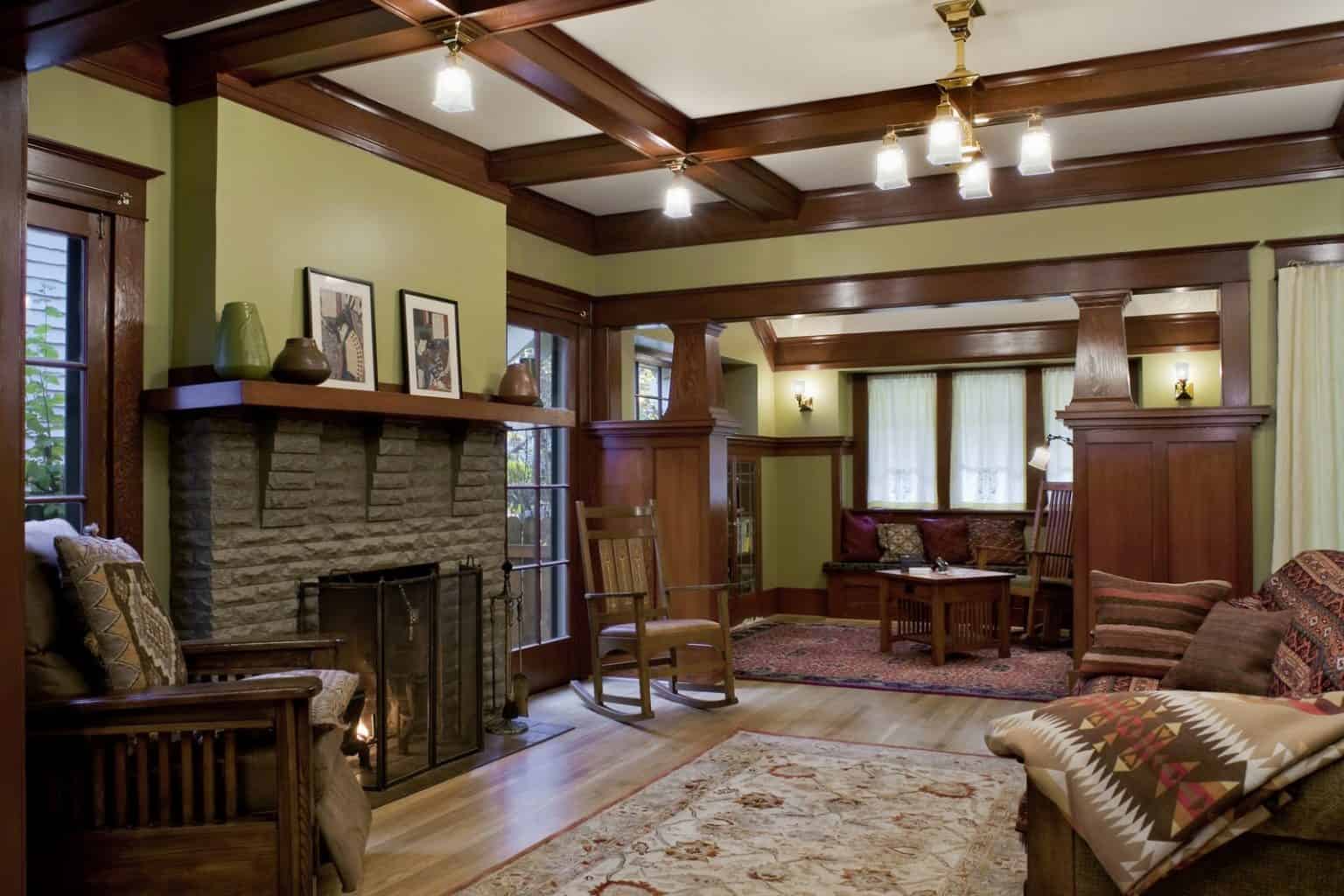Table Of Content

Both materials date back to the earlier gothic and renaissance times that the Arts and Crafts movement harkens back to. The resulting aesthetic is simple, elegant, and embodies a rejection of the movement towards fast paced and overabundant production methods, and their resulting design aesthetics. The Arts and Crafts Movement drew inspiration from nature, infusing interior spaces with elements of flora and fauna. Fireplaces were a prominent feature of Arts and Crafts interiors, not only serving as functional elements for warmth but also as focal points of artistic expression. The use of natural dyes in textiles reflects the movement’s dedication to creating beautiful and sustainable decor.
Choose vibrant arts and crafts fabrics for a modern twist
Just feast your eyes on Yves Saint Laurent’s famous Marrakech retreat, Villa Oasis, for a sampling of his sumptuous layering of color and patterns—or our Summer 2022 cover. New York Cityyounghuh.comDetroit native Young Huh knows all about crafting a room with personality. Huh specializes in both residential and commercial interiors, and her vast knowledge of art and design history makes for timeless interiors. The work of Tom Scheerer includes projects in New York City; East Hampton, N.Y; Nantucket, Mass.; Aspen, Colo.; and the Bahamas. He emphasizes furniture planning, spatial relationships, and color and texture, and he is fluent in various styles within the context of what he calls relaxed modernism. Jamaican-born architect Nina Cooke John’s two-decade-old practice focuses on clean lines and muted tones but lately has welcomed pops of color and well-placed antiques.
Osborne Wood Products
The abundant use of dark-stained wood is typical of an Arts and Crafts style home, and so are the window muntins. The lighter wood floors contrast the darker trim and paneling, and the entryway tile ties the two together. His work has appeared in GQ, Conde Nast Traveler, Playboy, Vice, and Architectural Digest, where he also worked as the local news editor. Some of the key characteristics of this style of home can be found just by looking to the exterior.
Unraveling the Beauty and Craftsmanship of Embroidery in Arts and Crafts Interiors.
Hallways are a great place to be bold with print, plus, being transient, connecting spaces, you can afford to experiment with darker colors, too. Arts and Crafts wallpapers, known for their organic patterns and attention to detail, continue to captivate with their timeless charm. Embroidery played a significant role in Arts and Crafts interiors, adding beauty and character to textiles and furnishings. Natural motifs are frequently incorporated into the design, reflecting the movement’s celebration of the beauty of the natural world. If you’re considering incorporating this style into your home, here are some tips to get you started.
What is Arts and Crafts house style?
Los Angeles–based partners Roman Alonso and Steven Johanknecht are masters of the new California cool. From homes to hotels to product design, their work embodies a respect for craft and an almost archaeological sense of place. Born and raised in Italy, Alessandra Branca grew up believing classical beauty is meant to be intertwined with everyday life. Her eclectic, colorful work fuses the workmanship of a couturier with practicality in all she designs.
Confirm your order with a 50% deposit and you'll have curtains in about four to six weeks. Some nod to other styles including English Tudor, Swiss Chalet, Japanese—even, anachronistically, Colonial Revival. The typical bungalow interior, at least as it was presented in the house books of the period, is easy to recognize.
Geometric patterns are often used in craftsman-style homes, as well as earth tones and muted jewel tones. Furniture in this style is typically handmade, with a focus on quality craftsmanship. Many of Morris’ designs drew inspiration from medieval times, featured nature-inspired motifs, and used raw, natural materials. His design firm, Morris & Co, crafted furniture, textiles, carpets, and embroidered items that were featured at the Arts & Crafts Exhibition Society in 1887.
Modern Arts and Crafts Kitchen
Embark on a journey to create cozy craft rooms that inspire creativity and productivity. Learn how arts and crafts elements can be incorporated into your workspace to design a practical and aesthetically pleasing environment. The arts and crafts house revival brings back the charm of the Craftsman bungalows that originated in the late 19th century. This is probably an obvious point, but no Arts and Crafts interior design scheme is successful without the presence of high-quality craftsmanship – and furniture is the area to introduce it. While Arts and Crafts interiors are often thought of as being dark, they were actually the opposite in many cases.
Use of Natural Pigments

The Arts and Crafts movement spanned from about 1880 to 1920 in Europe and the United States. It was a return to hand-crafted materials and simple furniture after a period of mass-produced factory furnishings. As a response to the withering quality of homes in the mid 19th century, designers began working to construct houses that had a more ornate look with angled rooftops, columns, porches, and beautified exteriors. Nature in all its glory was an endless source of inspiration for the Arts and Crafts interior design artists. Stylized depictions of nature enhanced the graphic appeal of the work while keeping it beautiful and familiar. Like other Arts and Crafts interior design objects, this one is very minimalistic, relying on the bright color and the effects of the glaze as the only decoration.

'The style is informed by tradition in both design and manufacture whilst also trying to establish a new design for living. There is a fairly radical socio-political undertone to the movement actively pushed by William Morris and other prominent figures,' Leo explains. New York City–based Roman and Williams courts prestigious clients both old and new, such as the Metropolitan Museum of Art and Facebook. Its louche luxe projects, helmed by founders Robin Standefer and Stephen Alesch, include numerous outposts of the Ace Hotel.
Founded in 2003 by Alexandra Pappas and Tatyana Miron Ahlers, this firm is ushering in stately design with a modern slant. Best friends since childhood, Pappas and Ahlers had combined backgrounds in art history, jewelry, real estate, and interiors before joining forces. In our Winter 2023 issue, ELLE DECOR published principal Christina Seilern’s recently completed vacation home on the Greek isle of Paros. Londonmiminat.comAfter founding her studio in 2018, the British Nigerian designer and artist has taken on ambitious work in locales from England to Nigeria to South Africa. Her elegant, pared-back aesthetic is all-encompassing, with Shodeinde often designing everything in a home down to the tables, chairs, and doorknobs. She’s currently working on projects soon to be completed in Kuwait City, London, and Ericeira, Portugal.
Michael S. Smith has an international profile of residential, hospitality, and commercial clients, and a style that is a seamless blend of European classicism and American modernism. Having launched her career on Wall Street, Charlotte Moss is equally attuned to the principles of classic decorating and the needs of a modern household, as well as inspired by women travelers and explorers who pushed boundaries. Founded in 1980 by George Yabu and Glenn Pushelberg, the design firm Yabu Pushelberg focuses on creating immersive experiences, unique destinations, and considered goods. The practice works with an impressive mix of clients, from hotels to restaurants and entrepreneurs. A fourth-generation Californian by way of the Bay Area, Nathan Turner wrote the book on the state’s aesthetic, called I Love California.
Instead, they stated that objects should be designed with their function in mind, and that function would then determine their characteristics. Others followed in Morris’s footsteps, including the architect CFA Voysey, whose patterns featured bold repeats and col- ours. Some of his designs are available through House of Hackney, Lewis & Wood and US company Trustworth Studios. Designer Ben Pentreath, who decorated an Arts and Crafts house in Hampstead featured in the May 2018 issue of House & Garden, is an advocate of its contemporary appeal. The Arts and Crafts movement has a deep, rich history of both politics and art, and was an integral part of the social movement at the time of the turn of the century. It produced many styles that have lasted till today, and the ideas have continued on into many different stylistic iterations.
Explore the significance of natural tones, from warm ochres to deep forest greens, and how they create a harmonious and welcoming atmosphere in your living spaces. With its focus on simplicity and function, the design features hand-made wooden furniture, artistic wallpapers, and textiles influenced by may Morris. The cozy interiors draw inspiration from nature, offering a warm and inviting atmosphere.
Celebrity Interior Designer Ashiesh Shah Is Spearheading The Movement To Put Indian Arts And Crafts On The World Map Like Never Before - HELLO! India Magazine
Celebrity Interior Designer Ashiesh Shah Is Spearheading The Movement To Put Indian Arts And Crafts On The World Map Like Never Before.
Posted: Sat, 07 May 2022 07:00:00 GMT [source]
'When I think of Arts and Crafts interiors, I think of a harmonious blend of functionality, materiality and craftsmanship. This era championed the virtues of handcrafted excellence and the beauty of natural materials,' says interior designer Matthew Williamson. In arts and crafts homes, rustic elegance is achieved by incorporating natural materials like wood and stone. The artisanal craftsmanship is evident in the hand-carved wooden furniture and intricate fireplace designs.
The Arts and Crafts movement was not just a design practice, it was also a political movement. It was tied to socialist politics and thinking in Britain, characterized by the labour party and the formation of strong trade unions. The crossover between the world of art and design and politics at the time was very strong. William Morris was an apprentice to the Gothic-Revival architect George Edmund Street. Morris also moved in the same circles as the painter Edward Burne-Jones and the Pre-Raphaeliteartists, including Dante Gabriel Rossetti, all of whom were fascinated by medieval art and nature.

No comments:
Post a Comment